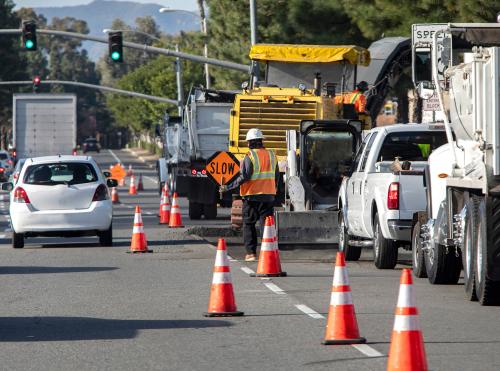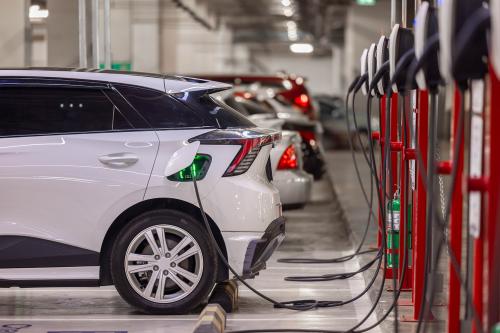After years of repeated short-term extensions, Congress is finally hammering out the details of a new long-term surface transportation bill. Earlier this month, the House passed a six-year, $325 billion bi-partisan measure—the Surface Transportation Reauthorization and Reform (STRR) Act—aiming to provide greater certainty for future highway, transit, and freight investments while increasing overall project efficiency and promoting innovation.
While Washington congratulates itself, the stark reality is that this bill falls short. A good deal of the criticism focuses on the dubious budgetary gymnastics STRR uses to pay for the program, and the fact that the bill only provides three years of funding while authorizing the program for six years. Furthermore, many observers believe that even if the program was fully funded, it doesn’t come close to addressing the nation’s needs.
But STRR also does damage by slashing funding for the successful Transportation Infrastructure Finance and Innovation Act (TIFIA) program from $1 billion to $200 million. TIFIA was created to help states and local agencies finance public and private transportation projects through direct loans, guarantees, and standby lines of credit. It is a very popular program with public entities like state transportation departments, local governments, and transit agencies, as well as their private partners. Under the prior law, TIFIA received requests from 55 projects to support nearly $66 billion in total investment. At the current level, the program will only be able to support about five loans per year.
The House was also able to craft a $725 million annual freight and highway project program. We’ve argued for years that we need a multimodal freight investment program, but STRR does not exactly accomplish that. For one thing, almost all of the money (90 percent) goes to highways despite the fact that only about three-quarters of the nation’s goods move by truck. Similarly, the lack of regionally-competitive funding based on clearer economic criteria means the freight components are a work in progress.
Meanwhile, metro areas and states have continued to devise and fund bold, innovative infrastructure investments by, among other things, going directly to voters with ballot box measures and other local revenue tools. Just two days before the House passed STRR, about 70 percent of these transportation measures passed, which together are expected to generate more than $4 billion in support for a range of projects.
From Connecticut to Colorado, eight states and dozens of localities offered a series of new bonds and taxes to maintain roads, expand trails, and enhance transit infrastructure. Maine approved an $85 million bond to invest in bridges and other freight assets statewide. Flint, Michigan voters approved a property tax renewal for public transit by a wide margin. Seattle achieved perhaps the greatest result, pumping more than $930 million over nine years into a host of street, transit, and pedestrian improvements.
So while STRR may make incremental improvements in federal policy, the country’s most novel transportation solutions continue to emerge from the bottom up. Instead of patting itself on the back, Congress should take a cue from where the real leadership lies.
The Brookings Institution is committed to quality, independence, and impact.
We are supported by a diverse array of funders. In line with our values and policies, each Brookings publication represents the sole views of its author(s).



Commentary
While Congress trumpets new transportation bill, real leadership lies outside Washington
November 16, 2015